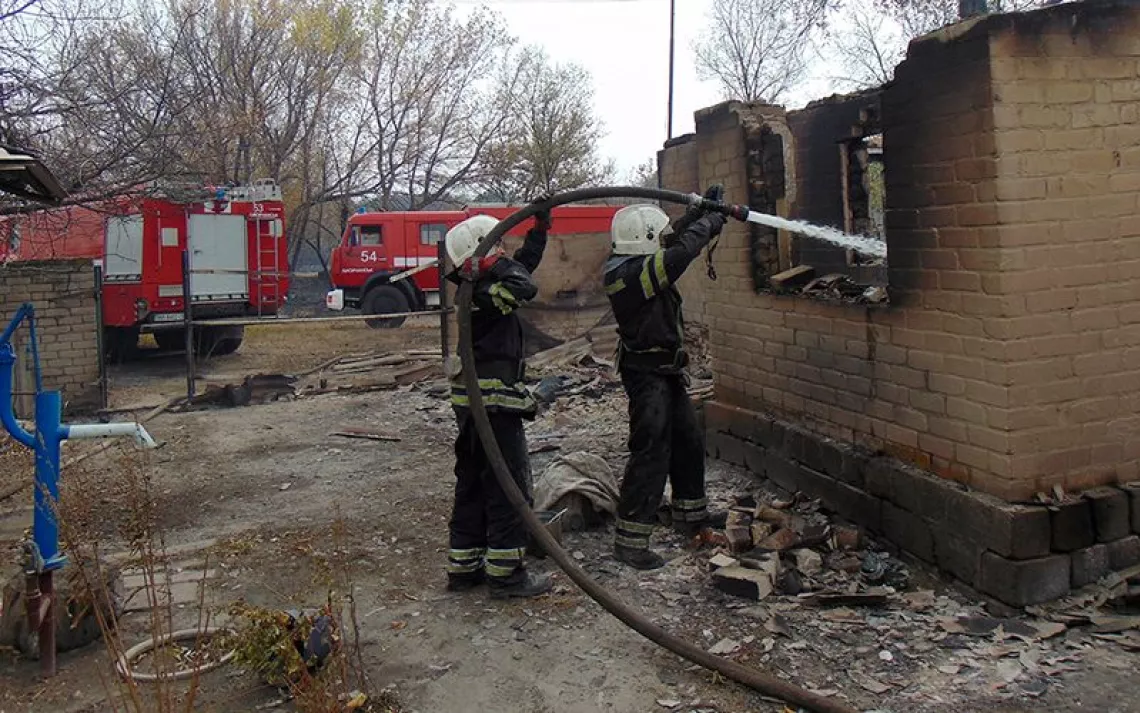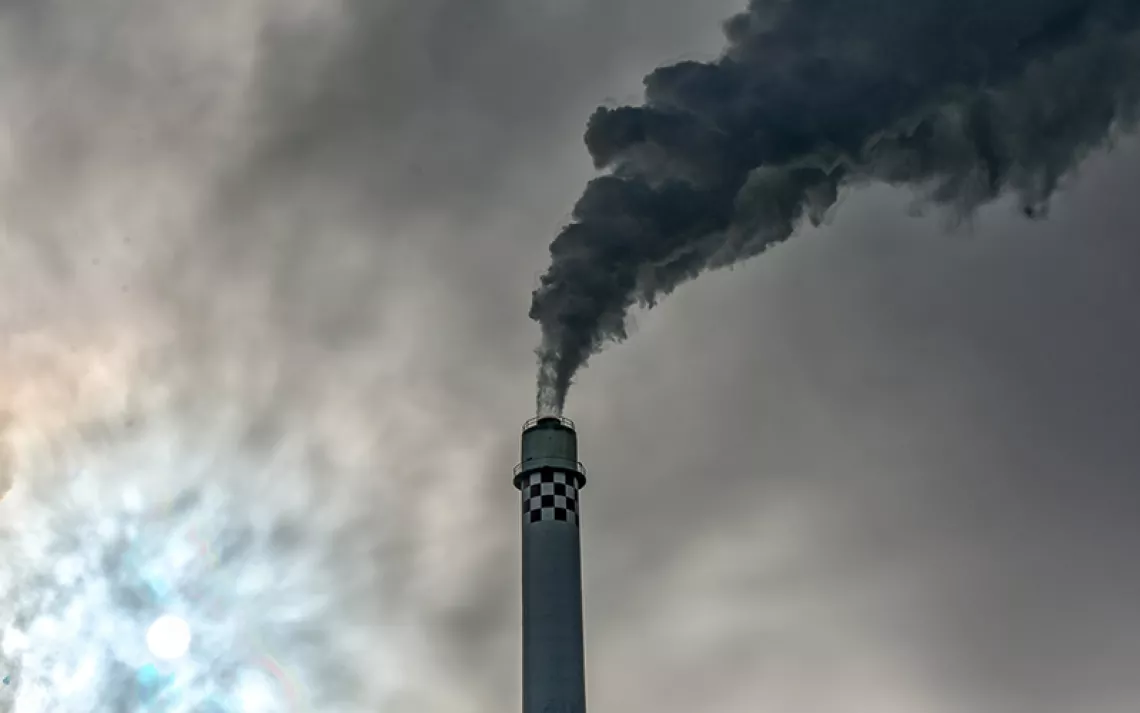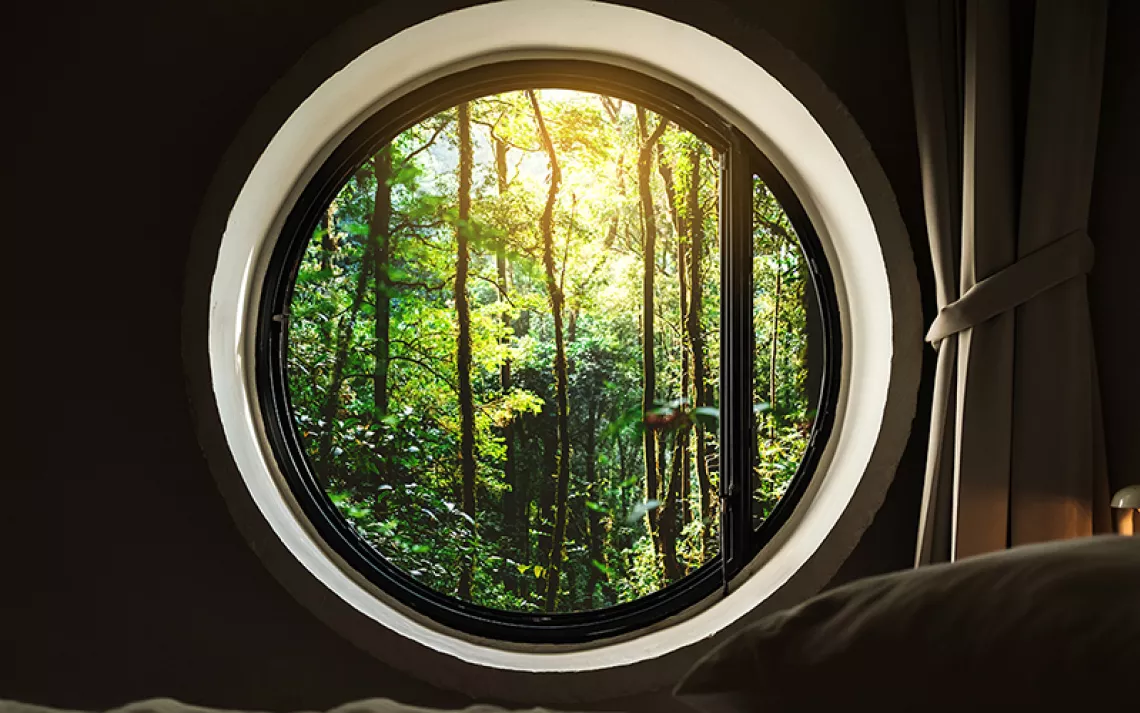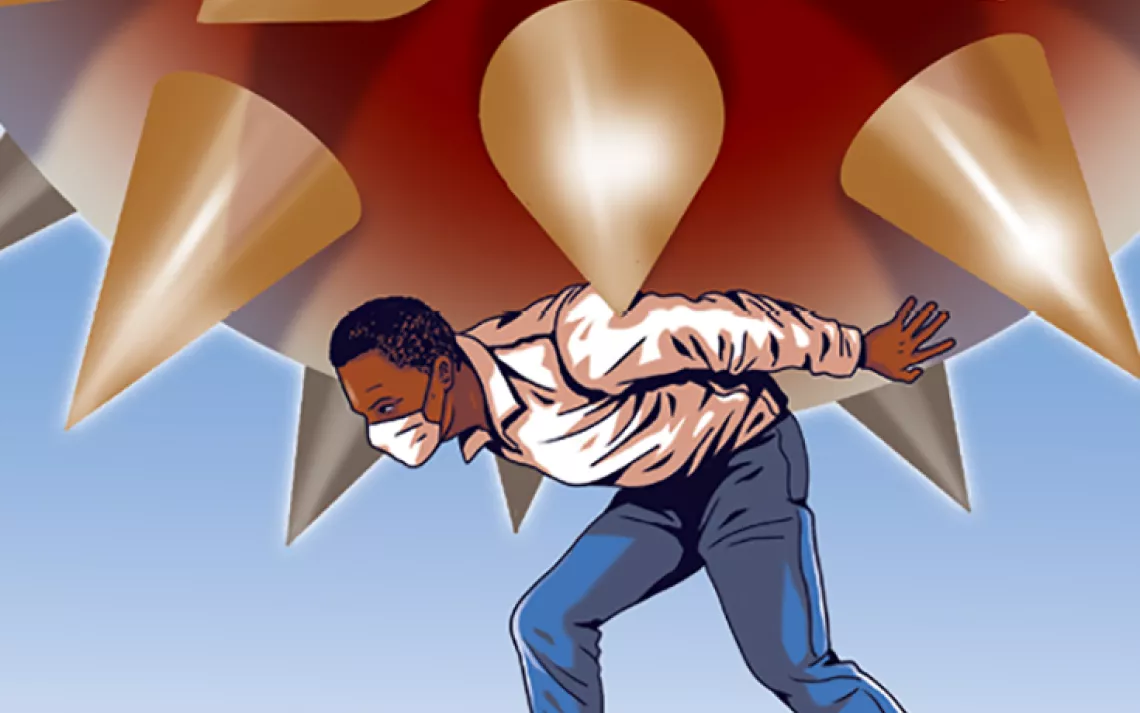A Teacher, a Classroom, and a Pandemic
From isolation, the students wrote how everything is connected
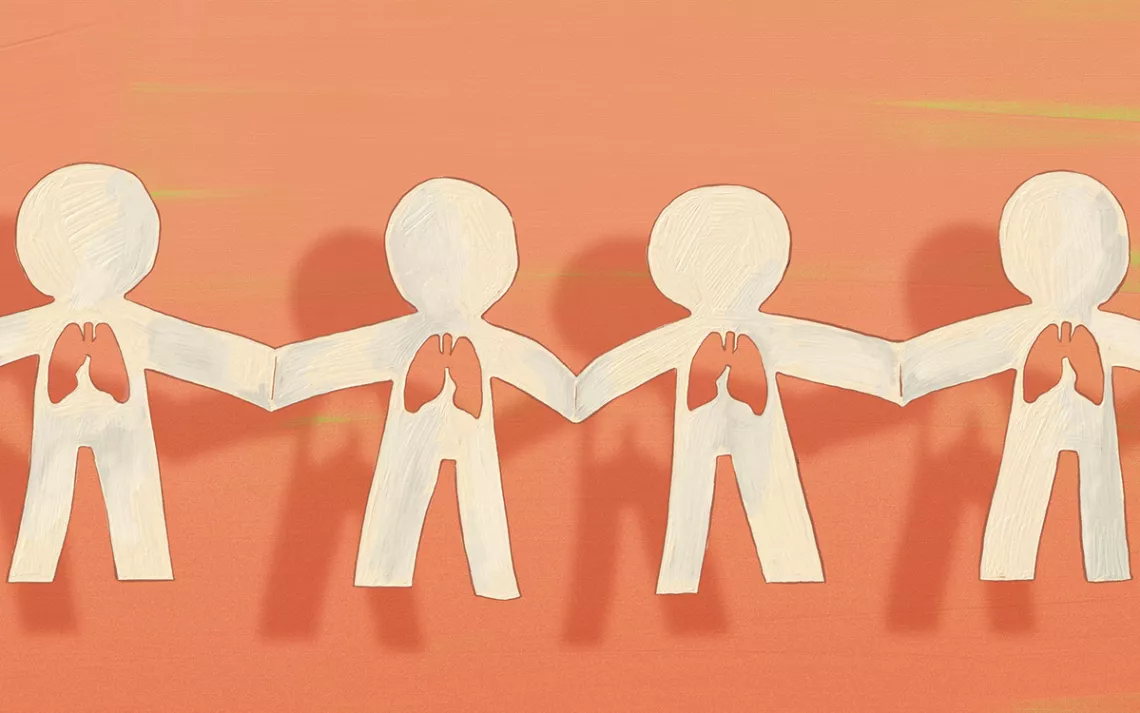
Illustration by Michelle Kondrich
For the first half of the semester, we discussed literature in the classroom, desks in a circle, breathing the air together, my students testing their voices in the world. After spring break, the campus closed. We retreated to our separate spheres.
At home, I walked the driveway to see the crab apple blossoms, the white flowers lacing the blue sky. The strangest thing about a pandemic is that everything keeps blooming. Pollen whirled on the air and piled into drifts with rippling lines like sand dunes. I thought about how this year will be recorded in the pollen record, as every year is, laid down into the layers of time for the future.
I saw my students, far away, on a screen. From isolation, the students wrote about how everyone is connected. With the virus blossoming in the microcosmos, this old, important news traveled quickly. My students remembered when China—where we have outsourced the production of so much of the unnecessary stuff we buy and where air pollution causes more than a million premature deaths every year—seemed far away.
Before the pandemic, I gave them an assignment to write about the fires that were devastating the Amazon rainforest. Now the lungs of so many in the world were struggling for air, but the air was also clearing as we considered what was essential, a word gaining new meaning in our everyday lexicon. Trees, water, food, shelter. Stories.
Breathing. Air pollution was reduced to a level that the globe hadn’t known in years, as if the whole planet was breathing again. Residents of Shanghai reported seeing pristine blue skies. News broke that, in the United States, we had produced more energy from renewable sources than from coal for the first time in over a hundred years.
I read aloud to my students from Juliana Spahr’s This Connection of Everyone With Lungs: “As everyone with lungs breathes . . . the space of the neighborhoods nearby and the space of the cities and the space of the regions and the space of the nations . . .” The lines of the poem expand outward to encompass, finally, the space of the oceans, the troposphere, the stratosphere, and the mesosphere. “How lovely and how doomed this connection of everyone with lungs,” writes Spahr.
I became aware, in reading it aloud, of the deep inhale I had to take to say the words, the lungs’ expansion. We all read the news of the virus’s spread, held our breath.
Only a few weeks after our last class discussion, George Floyd cried “I can’t breathe” in a video that captured his dying breaths for the whole world to see.
Not everyone breathes the same air, then. Not all lungs are equal. My Black students are more likely to have grown up near a power plant than my other students, more likely to have asthma. Their family members are more likely to be essential workers, more vulnerable to the virus. The connection between racial oppression and environmental degradation is something the virus is making visible.
The forests of the Amazon would not be burned down without the disregard for its Indigenous inhabitants; the skies of Shanghai would not be continually smogged without an economy that exploits workers.
It is essential that everyone can breathe, not just the white and the wealthy. That this would be the lesson of a virus that attacks the lungs, that all the planet’s people are sitting in the classroom of the virus now, testing their voices in speaking new possibilities, so that we can make changes as swift as those that the virus forced upon us—how terrible and how lovely this connection.
This article appeared in the September/October 2020 edition with the headline "Lessons in Breathing."
 The Magazine of The Sierra Club
The Magazine of The Sierra Club
